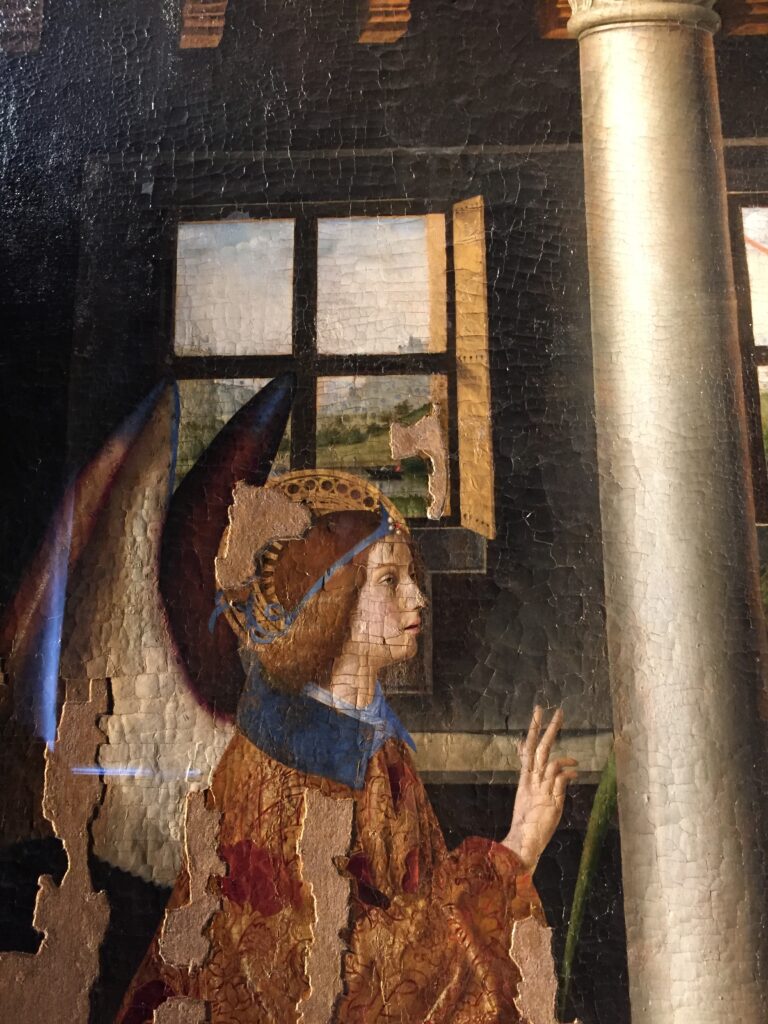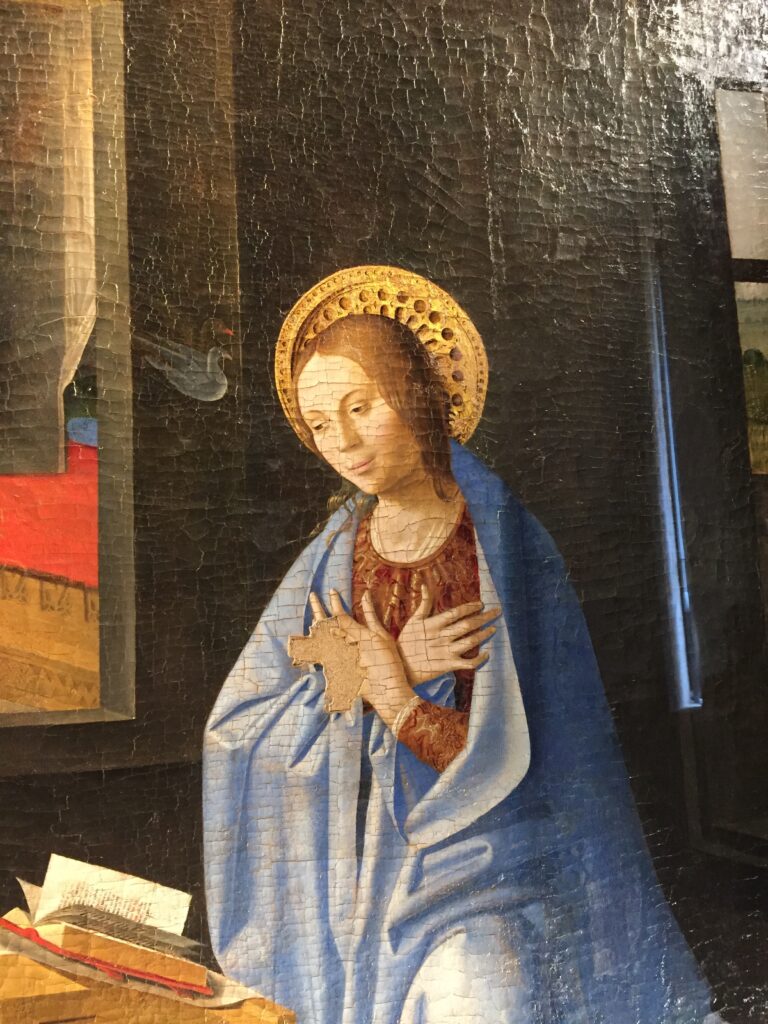Antonello da Messina is one of the most important painter of the Renaissance and he greatly contributed to the revolution in the technique of painting. Due to his contacts with Flemish artists, he introduced oil pigments in Italy. In Rome, he met Piero della Francesca who influenced his ideas regarding the volume, the perspective and the use of the light.
So we are proud to display one his masterpiece in the Bellomo’s collection in Siracusa: “The Annunciation“.

THE HISTORY OF ITS FINDING
In 1897 Enrico Mauceri was entrusted by the local heritage department of Siracusa to make a catalogue of all the works of art in the province. He found Antonello’s painting into the church of Annunziata in Palazzolo Acreide, near Siracusa . In 1903, in the State Archive of Messina the document registered in front of the notary Antonio Mangiuni was found, claiming the attribution of the painting to Antonello da Messina.
THE STYLE
The scene is set in a domestic space, well furnished and carefully described. The ceiling has wide beams and windows through which the countryside appears. In the foreground a column divides the room in two halves: on the right side the Virgin, the Angel on the left. Mary, inspired with the truth, is represented on her knees with her arms crossed over her chest. This is the typical pose called “humbleness”. A ray of sunlight, which is symbol of conceiving, reaches her. She is dressed in the typical blue mantle that covers her red damask robe . The mantle compounds the almost geometric volume of her body.
The Angel is in front of her, he holds the traditional palm . He is bending forward . He relates the celestial announcement. His face framed by long blond hair, delicately decorated with a blue diadem filled with thorns pearls, and rubies which sparkle in a notation of “lustre”, typical of the Flemish way.
THE RESTORATION
The restoration of the “Annunciazione” by Antonello started for the first time in Milan in 1908, after the panel was purchased by the Archeological Museum of Siracusa. Luigi Cavenaghi, one of the well-known restorer of the time, decided to transfer the work from wood to canvas in order to preserve it from the total ruin of the wooden base. In 1942 under the direction of Cesare Brandi , the painting underwent a second restoration, during which the areas of loss were filled with neutral tones of color.
Recently , in 2008, the National Institute for Restoration and Preservation in Rome ran a more accurate analysis of the general conditions of the work. Following Cesare Brandi’s original idea, scientists and curators decided to continue the restoration further, integrating the original missing fragments with similar tones of color. This technique is known as “rigatino” or “tratteggio”; it consists of applying a sequence of very thin line of brush strokes that at a distance blend and meld with the painting. In this way, all of the shades are preserved better than by using any other mixture of colour and the final result is ultimately more precise.
The painting by Antonello da Messina is on permanent display at the Medieval and Modern Art Museum of ” Palazzo Bellomo”.

1 commento finora